Are Ragdoll Cats Hypoallergenic?
Many people love cats, and with good reason: They're cute, fuzzy and endlessly entertaining. Many people are also, unfortunately, allergic to cats. If you're one of those people who sits in the middle of the Venn diagram of cat lovers and cat allergy-havers, you may have heard that some cat breeds, like Ragdoll cats, are hypoallergenic. While there is a seed of truth in this rumor, veterinarians note that there are some things that those with allergies should consider before bringing a cat into their home. We asked vets if ragdoll cats are hypoallergenic, and what other cat breeds might be good for those with kitty-related sniffles.
The lowdown on cat allergies
Pet allergies are no joke. In fact, research from Allergy, Asthma & Immunology states that up to 20% of the worldwide population has an allergy to dogs or cats. Within that group, more people are allergic to cats than dogs, and by a significant margin: Cat allergies are about twice as common as dog allergies, according to the Asthma and Allergy Foundation of America.
Experts theorize this may be due to the physical properties of the allergy-causing protein found in cats called "Fel d 1." It's sticky and microscopic — about one-tenth the size of a speck of dust. Because it's so small and light, it can stay in the air for long periods of time, and its stickiness allows it to bond easily to clothes and skin. Dog allergens are larger, so they don't stay airborne as easily, which may be why not as many people have dog allergies.
Fel d 1 is responsible for causing allergic reactions in 95% of cat-allergic adults. And it’s not just found in the fur like you might expect — that means Fluffy’s shedding problem alone isn’t what’s giving you the sniffles. “This protein is found in cat saliva, skin and urine,” says Dr. Sabrina Kong, DVM and veterinary contributor at We Love Doodles.
So while you might sneeze and sniffle when you see piles of cat fur collecting in the corners of your living room, it’s actually your kitty’s dander — dead skin cells that naturally fall off — combined with saliva she produced while grooming that’s aggravating your allergies.
Are ragdoll cats hypoallergenic?
Ragdoll cats are popular for their obvious good looks, but they're more than just a pretty face. They’re filled with charm and unique personalities — and potentially hypoallergenic qualities— that have gained them a dedicated following.
In fact, it’s said that they’re called Ragdolls because of the way they completely relax and surrender when being cuddled — they go limp like ragdolls. Check out the video below of Bowie the Ragdoll cat exhibiting this adorable trait:
They’re also calm and people-oriented, which has gained them some acclaim with those who don't even consider themselves "cat people." “They’re often described as dog-like because of their tendency to follow their owners around and their sociable behavior,” says Dr. Kong.
Beyond their appearance and sparkling personalities, Ragdolls are also a popular pet choice for feline fanatics with cat allergies. “Ragdolls shed less than other breeds due to having no ‘undercoat,’ so there may be less allergens in the environment," says Dr. Mikel (Maria) Delgado, cat behavior expert with Rover.
“What makes a cat ‘hypoallergenic’ isn’t about fur length or shedding, but rather the amount of Fel d 1 protein they produce,” says Dr. Kong. Ragdoll cats are not fully hypoallergenic, say veterinarians, but they may be a good cat breed for those with cat allergies. “Ragdolls are known to produce fewer allergenic proteins, which make them a better choice for some allergy sufferers,” says Dr. Kong.
Other cat breeds good for allergy sufferers
“While no cat breed is completely hypoallergenic, some breeds are known to produce fewer allergens than others, making them potentially more suitable for people with allergies,” says Dr. Alejandro Caos, a veterinarian with The Vets. Keep scrolling to see photos and learn the characteristics of these allergy-friendly cat breeds.
1. Devon Rex
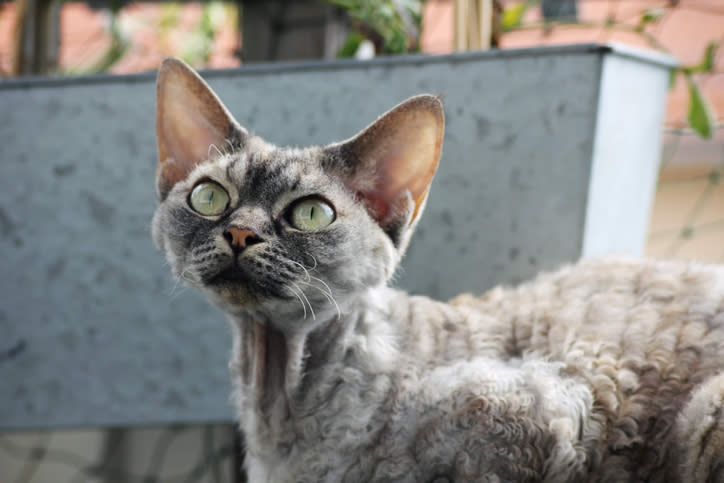
These striking cats have curly coats and tend to shed less, says Dr. Caos. They're not known to produce less of the allergy-causing protein, but because they're not sloughing off as much dead skin and saliva that's often attached to fur that's been shed, Devon Rexes may be a good option for allergy sufferers.
2. Cornish Rex
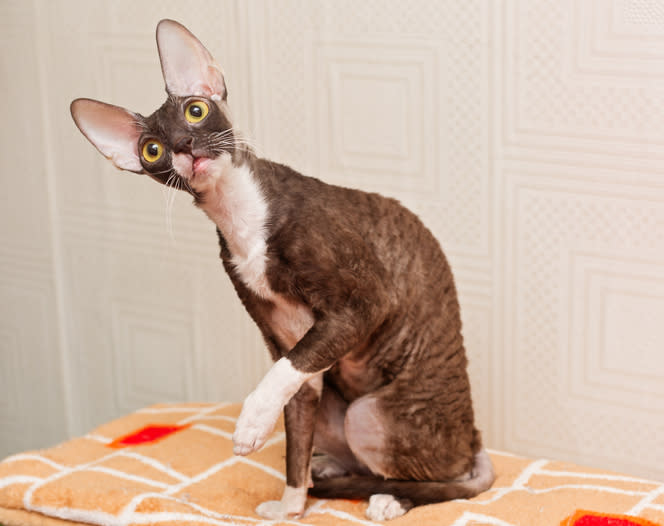
Not only do Cornish Rexes not shed very much, these kitties are also curly coated like the Devon Rex, which Dr. Caos says may be helpful in trapping allergens instead of releasing them into the environment. (Click through to learn more about other curly hair cats and their fascinating histories.)
3. Sphynx
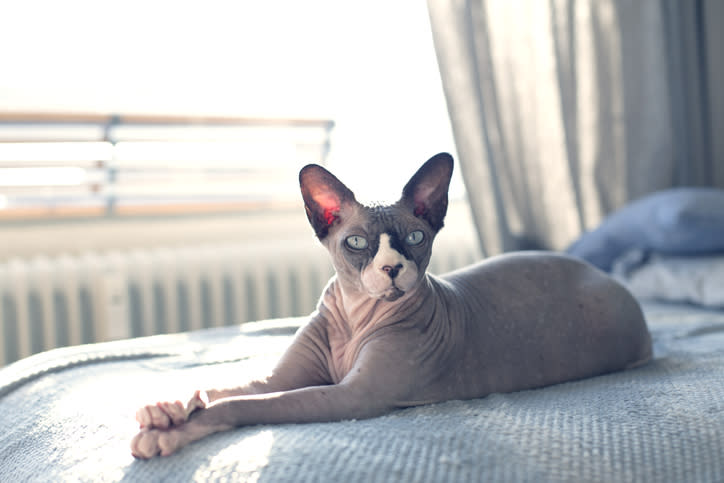
While some Sphynx cats have peach fuzz, many of them are hairless, which is undoubtedly their most unique feature. They still produce the Fel d 1 protein in their saliva, skin and urine. But since fur that's been shed is a big carrier for airborne Fel d 1 and Sphynx cats don't (and can't) shed, they may make a good choice for those with cat allergies. They're lack of hair makes them prone to a chill, so be prepared to put your Sphynx cat in a sweater… or a pancake costume, like the Instagram-famous Sphynx, Ichabod (@ichabodsphynx):
4. Siamese
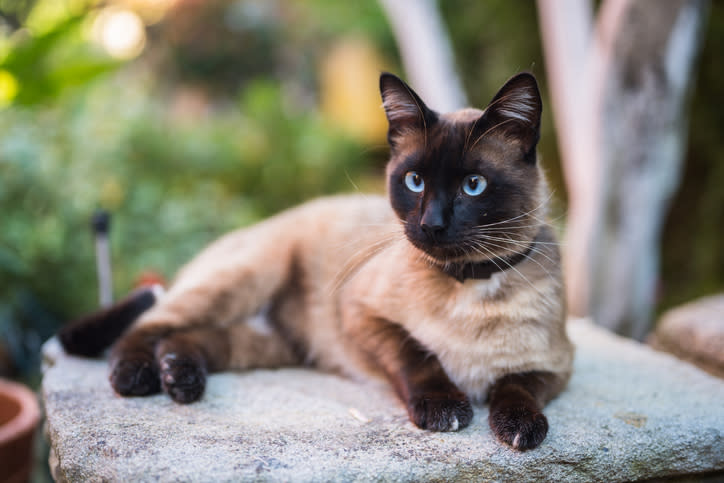
Siamese cats are regal and affectionate. They're known as "Velcro cats" because of how much they like to stick to their human's side at all times. They may also be more "hypoallergenic" than other breeds due to the fact that they don't shed heavily.
5. Balinese
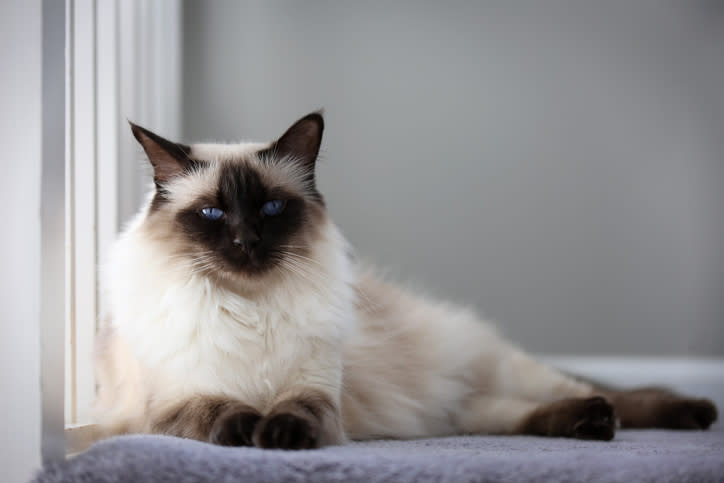
While they just look like Siamese cats with fluffy coats, Balinese are their own breed. And despite that fluffiness, they tend to produce fewer allergens because they don't shed very much, especially compared to other long-coated cats.
6. Bengal
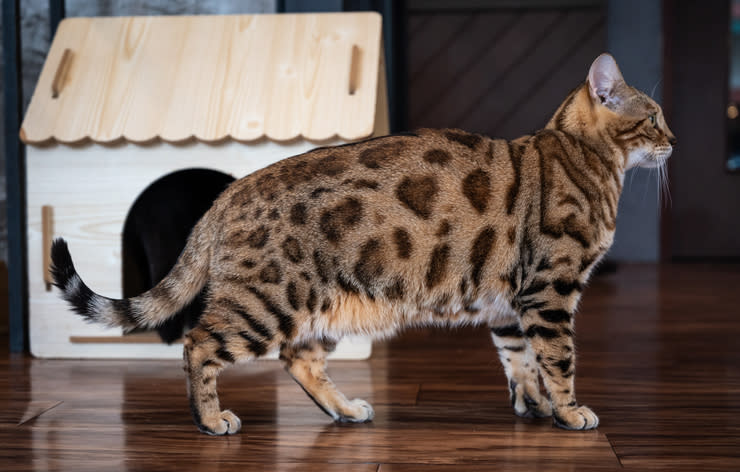
With their unique coats, Bengal cats are the closest you can get to having a leopard as a pet. They tend to shed less than other cats, but they also don't groom themselves as often as other breeds, meaning they're not covered in Fel d 1-carrying saliva. These wild-looking sweeties may be a good option for those with kitty-related sniffles.
7. Russian Blue
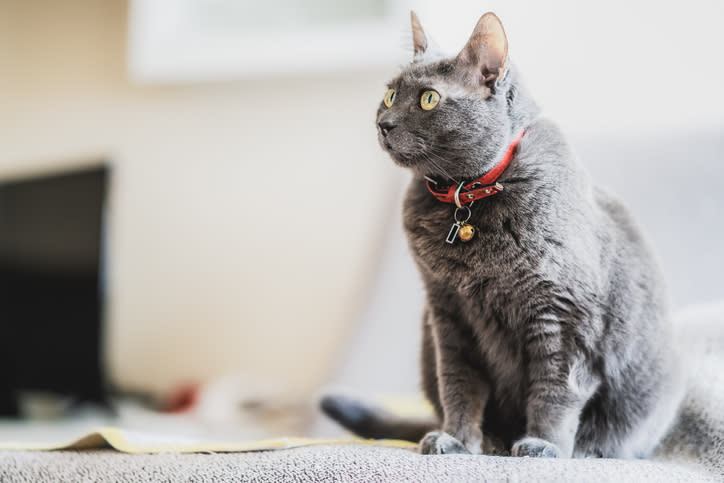
Even though Russian Blue cats have dense coats, they aren't prone to shedding and they produce less Fel d 1, making them a good option for allergy sufferers. They're also sweet and affectionate, and they tend to pick a "favorite" pet parent that they bond very closely with.
What to do if you're still experiencing bad cat allergies
Even if you have one of these “hypoallergenic” cat breeds, you may still have allergic reactions, depending on the severity of your condition. The good news is that there are some things you can do to mitigate allergic reactions around your cat.
Dr. Delgado recommends minimizing the use of carpets or drapes in areas your cat spends a lot of time since these can hang on to dander. She also notes that HEPA air filters can prove helpful. The most surprising solution, however, might be what you feed your cat. “There is a new diet for cats from Purina called LiveClear that reduces the amount of Fel d 1 in cats’ saliva, so that can reduce your allergy signs,” says Dr. Delgado.
Indeed, Purina notes that, within the first three weeks of feeding, this food reduces the amount of Fel d 1 in your cat’s dander and hair by 47%. The food contains an egg-based protein found in eggs that binds to and neutralizes the Fel d 1 protein. Consult your vet to see if switching to LiveClear (Buy from Amazon, $22.31) is a good option for your furry friend — and for you.
Can't get enough cats? Click through to learn more about fabulous felines:
Why Do Cats Loaf? Vet Experts Reveal the Sweet Reason Behind This Cute Behavior
Why Cats Stick Out Their Tongue — Vets Reveal the Quirky Reason and When to Be Worried
Woman's World aims to feature only the best products and services. We update when possible, but deals expire and prices can change. If you buy something via one of our links, we may earn a commission.
Questions? Reach us at [email protected]